
Baking powder is used in many cupcake recipes for its leavening power. Leavening, which means to make something rise, is what gives your cupcakes their trademark shape. Without baking powder, your cupcake may end up a hard stump with no rounded top to frost. Baking powder also affects the texture, and may affect the flavor, of your cupcakes. The main ingredient in baking powder is baking soda. Baking powder also contains cornstarch to help absorb moisture and an acidic powder, such as cream of tartar, to help with the alkaline/acid reaction.
Leavening
Baking powder contains baking soda, which is an alkaline substance that reacts when mixed with moisture and an acidic substance, such as milk or lemon juice. This reaction causes carbon dioxide gas to be released into the batter. As this gas expands the already-present air bubbles and rises, it lifts the batter around it. This is why you only fill a cupcake cup two-thirds to three-fourths full with batter when baking. Once the baking process is done, the cupcake will more than fill the cup, not to mention grow a rounded top. Too much baking powder can cause the cupcake to rise too much, and then deflate back into a hard lump.
Texture
One of the positive side effects of using baking powder in a cupcake recipe is that it creates a tender texture. This softness is produced when air bubbles are trapped in the batter during the cooking process. The air bubbles act as tiny cushions to the cooked batter that surrounds them. These air cushions are why you can gently poke a baked cupcake top and see it spring back.
Taste
Baking powder has a bitter taste that can alter the flavor of your cupcakes if you use too much. Baking powder is a powerful leavening agent, so most cupcake recipes only call for a small quantity. It’s important to mix the powder into the other ingredients well, even in small portions, to prevent bitter-tasting lumps. This is why many recipes call for you to sift the dry ingredients together -- it aerates the ingredients and prevents lumps during mixing.
High Altitude
Baking powder works as a leavening agent in high altitudes and it goes into overdrive. High altitude, which is anything above 3,000 feet above sea level, means low air pressure. The lower the air pressure, the faster the gas from the baking powder escapes. This means the baking powder works faster than at lower altitudes. For best results, use a pinch less baking powder than called for in the recipe if you’re baking cupcakes at a high altitude.
Warnings
Don’t confuse baking powder with baking soda. Baking powder is made using baking soda, but it contains other ingredients as well. More importantly, baking powder is nowhere near as strong as baking soda.
Related Articles
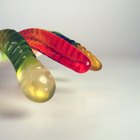
Will Gummy Worms Melt If Baked in ...

How to Dissolve Non-Instant Milk Powder
How to Bake Cupcakes at High Altitudes
Easy Strawberry Cake Recipe

Chocolate Chip Cookie Dough Brownies
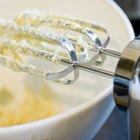
Does Baking Soda Affect the Height of a ...

Can I Use Soda Pop in Brownies?
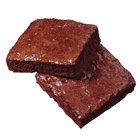
How to Replace Yogurt for Butter in ...
How Many Calories are in Pistachio ...

Can You Use Beet Powder for Cupcakes?
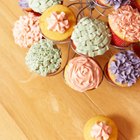
How to Use a Syringe in Cake Decorating
How to Make Frosting Bubbles for a ...

Butter Substitute for Molten Lava Cake
Baking Fresh Strawberries Into the ...

How to Cook Brownie Cupcakes Without ...
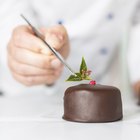
The Difference Between Bittersweet ...

What Easy Desserts Can You Make Out of ...

How to Bake Custard in Ramekins

Can You Substitute Semi Sweet Morsels ...
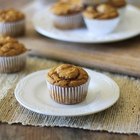
How to Make Pumpkin Muffins
References
- Joy of Baking: Baking Powder and Baking Soda
- Bon Appetit: Baking Soda
- United States Department of Agriculture: High Altitude Cooking and Food Safety
- On Food and Cooking: The Science and Lore of the Kitchen; Harold McGee
Writer Bio
A writer since 2000, Aya Pauli has covered a variety of topics including food, fashion, beauty, health, parenting, education, decor and crafts. Her award-winning recipes have been published in food magazines such as "Taste of Home," and she is also the author of a salad cookbook. Pauli's craft projects appear in major manufacturer websites, including Dow Styrofoam. She also holds a CDA in early childhood education and works as a preschool teacher in Wyoming.
Photo Credits
Jupiterimages/Polka Dot/Getty Images